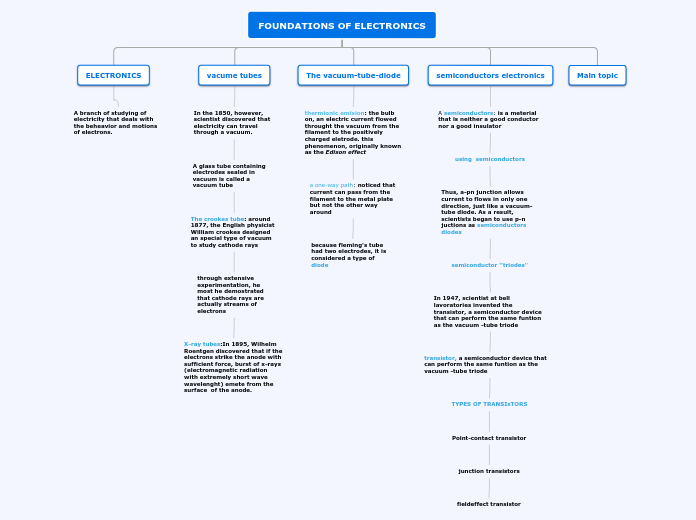por Diego Vasquez 6 anos atrás
428
Organigrama

por Diego Vasquez 6 anos atrás
428

Mais informações
Thus, a-pn junction allows current to flows in only one direction, just like a vacuum-tube diode. As a result, scientists began to use p-n juctions as semiconductors diodes
semiconductor ''triodes''
In 1947, scientist at bell lavoratories invented the transistor, a semiconductor device that can perform the same funtion as the vacuum -tube triode
transistor, a semiconductor device that can perform the same funtion as the vacuum -tube triode
TYPES OF TRANSIsTORS
Point-contact transistor
junction transistors
fieldeffect transistor
because fleming's tube had two electrodes, it is considered a type of diode
The crookes tube: around 1877, the English physicist William crookes designed an special type of vacuum to study cathode rays
through extensive experimentation, he most he demostrated that cathode rays are actually streams of electrons
X-ray tubes:In 1895, Wilhelm Roentgen discovered that if the electrons strike the anode with sufficient force, burst of x-rays (electromagnetic radiation with extremely short wave wavelenght) emete from the surface of the anode.